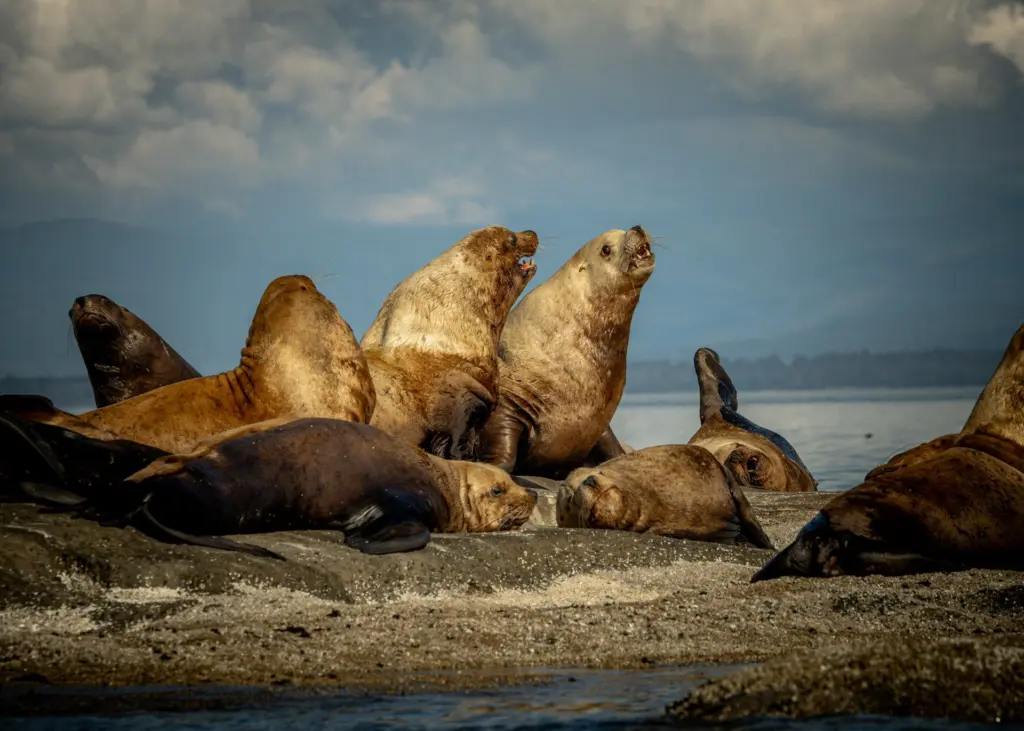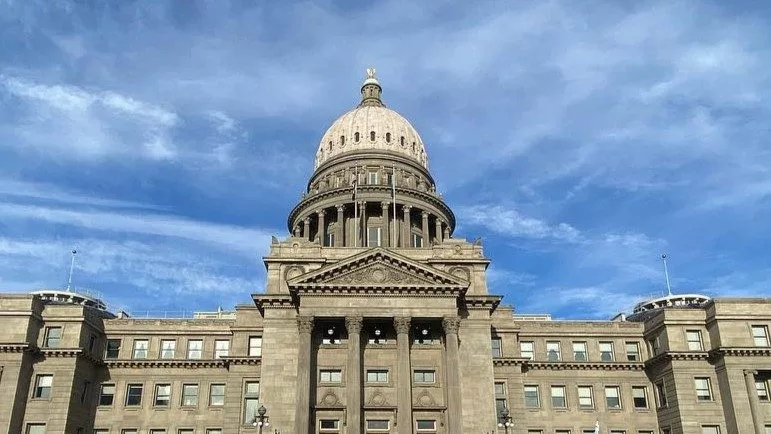PORTLAND, OR – The federal permit that allows Northwest states and some Native nations to trap and kill salmon-eating sea lions in the Columbia River was reapproved late last week.
The National Oceanic and Atmospheric Administration’s National Marine Fisheries Service renewed a 2020 permit that had allowed the removal of 540 California sea lions and 176 Steller sea lions from Bonneville Dam and Willamette Falls.
Of that approved number, only 116 Californias and 114 Stellers were taken. The new permit allows the remainder of the original permit to be removed — a total of 486 sea lions between now and Aug. 22, 2030.
The approach generated immense pushback in the late 2010s, with the 2020 permit application generating about 22,000 public comments — of which, fewer than 200 supported it, The Seattle Times reported then.
But controversy over the killings has faded in the years since. Officials have repeatedly failed to reach consensus on how to fight off salmon extinction in the river, leaving sea lions as an obvious target.
This time, NOAA said, the permit application received only one comment.
Key salmon predators
“This extension allows us to continue important work to manage (sea lion) predation on salmon, steelhead and other native fish populations while supporting ongoing recovery efforts in the lower Columbia River,” Casey Clark, Washington Department of Fish and Wildlife’s lead marine mammal researcher, said in an email.
The department targets the sea lions at Bonneville Dam in particular because fish returning to spawn are corralled into the dams’ three fish ladders’ roughly 12-foot-wide entries as they try to pass the dam. That turns the entrance into a buffet for the opportunistic predators.
“The dams have created an ‘evolutionary win’ for the sea lions: They can feast at the fish ladders with very little effort,” said Kerry Solan, a spokeswoman for the U.S. Army Corps of Engineers’ Portland District, which runs the dam. “As part of our (sea lion) hazing efforts, we use pyrotechnics and rubber bullets: basically, nonlethal deterrents to move the sea lions away from those areas.”
But the animals don’t waste time while they’re at the dam. They eat three to five salmon a day on average, said Doug Hatch, a senior scientist at the Columbia River Inter-Tribal Fishing Commission, which represents three of the four treaty tribes in the program.
Hatch has led the organization’s sea lion program since 2005, and says 515 sea lions have been removed since 2008.
The vast majority of those removed sea lions were killed, largely because zoos don’t want them, he said. The animals are killed by a veterinarian who injects them with a sedative, then euthanasia drugs.
While removal numbers vary from year to year, federal data shows the total is trending upward.
And Hatch said modeling shows those 515 removals have helped keep struggling salmon stocks afloat, for now.
“Conservative estimates put that at over 100,000 fish that have been saved by these sea lion removals,” he said.
Those removals are crucial for stopping sea lions from “decimating” salmon stocks, Solan said. That’s because, despite the Corps’ best efforts to scare the animals away, they just keep coming back.
“Hazing temporarily changes foraging behavior in a small area for a brief period of time, because sea lions quickly learn that hazing doesn’t hurt,” she said in an email. “Overall, it is difficult for nonlethal measures to overcome the lure of a seafood buffet at the artificial constriction presented by the dam.”
Growing populations
But populations of the protected animals continue to grow.
The first three Steller sea lions were documented at Bonneville Dam in 2003, according to NOAA Fisheries. Fifteen years later, “a minimum of 66 animals were observed at the dam during a single day.”
And in the past decade, the number of California sea lions in the Columbia River basin jumped from fewer than 500 to around 4,000.
Hatch said that while no one knows exactly what’s driving that, the best guess is that food sources in Southern California collapsed, and then decent Columbia River fish returns in the 2000s drew sea lions here.
But during that same roughly 20-year period, salmon and steelhead populations have stayed static at Bonneville.
In the river at large, between 10 million and 18 million fish returned each year before the hydropower system. Recently, they’ve numbered about 2.3 million.
Wild fish, in particular, have suffered. Most wild Columbia Basin salmon and steelhead runs are less than 5 percent of their pre-1850s levels, a 2022 NOAA report found.
Of course, the fish confront more challenges than just sea lions. Climate change, ocean overfishing, habitat destruction and dams (which obstruct fish passage and heat the river to deadly highs) all play huge roles in their struggles.
Compounding that, the Trump administration has gutted recovery funding, and the hydropower industry is lobbying for reduced accommodations for the fish.
More removals ahead
Amid unending finger-pointing over what can be done to prevent salmon extinction in the basin, sea lions have emerged as a rare point of agreement, allowing the removal program to continue largely outside of the limelight.
The program is expanding beyond the easy pickings near Bonneville and Willamette Falls and will remove sea lions at more sites between the Interstate 205 Bridge and McNary Dam.
But Hatch acknowledged that likely won’t be enough to satisfy some who want sea lions removed from other locations. Earlier this year, for example, smelt dippers on the Cowlitz River fumed when the animals munched on smelt runs the state blocked them from harvesting.
“I’m sure, from many people’s perspective, we’re not doing nearly enough,” Hatch said.
But for Hatch, the goal is just to break the animals’ Bonneville Dam habits and keep them down by the mouth of the river where their diet is more varied than just salmon.
“They’re very clever, these animals are,” he said, “it’s hard to keep ahead of them.”
This article was first published by The Columbian through the Murrow News Fellowship, a state-funded program managed by Washington State University.
Washington State Standard is part of States Newsroom, a nonprofit news network supported by grants and a coalition of donors as a 501c(3) public charity. Washington State Standard maintains editorial independence. Contact Editor Bill Lucia for questions: info@washingtonstatestandard.com.





